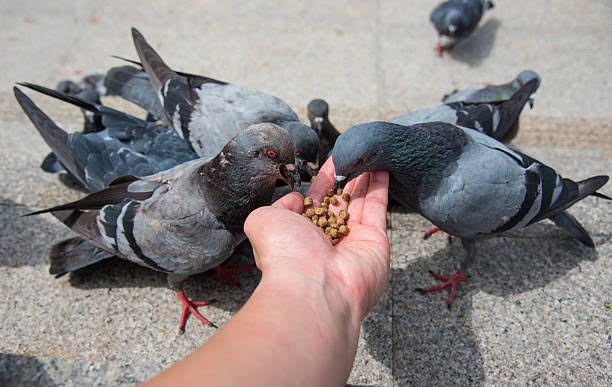Why India must rethink its love for Pigeons: Health risks exposed

To Feed or Not to Feed: Urban India’s Growing Pigeon Dilemma and Its Impact on Health, Heritage, and Habits
The birds’ population has increased unnaturally as a result of the feeding habit. There are serious threats to lung health because of their closeness to humans.
Pigeon populations in India grew by almost 150% between 2000 and 2023, the largest percentage rise of any bird whose numbers increased, according to the 2023 State of India’s Birds study.
In Delhi and various other cities, it is a frequent sight to observe individuals affectionately feeding grains to pigeons on traffic islands and sidewalks, as well as keeping them as household pets.
Pigeons have successfully adapted to live in human habitation to nest on human structures and to feed on the food that we provide. However, living in close proximity with pigeons is harmful. Lung conditions such as hypersensitivity pneumonitis (HP), sometimes referred to as fancier’s lung, and other respiratory illnesses can result from pigeon exposure.
Hypersensitivity pneumonitis
Hypersensitivity Pneumonitis (HP) is a rare but a lung disorder caused by allergic reactions to proteins present in pigeons.
This immune-related condition arises from the inhalation of airborne antigens found in pigeon droppings or feathers. Individuals may experience a range of symptoms, including a chronic cough, difficulty breathing, chest discomfort, wheezing, fatigue, fever, chills, night sweats, and decreased appetite. In more severe instances, patients might require supplemental oxygen or even a lung transplant.
Understanding Hypersensitivity Pneumonitis (HP)
HP is categorized as a chronic interstitial lung disease. This condition is characterized by lung inflammation and scarring, resulting in breathing difficulties. While it is more commonly seen in adults, HP is relatively rare in children, occurring in only 2-4 cases per 100,000 individuals annually.
Respiratory infections
Bacteria present in pigeon droppings can result in respiratory infections. These infections may occur through inhaling dust generated during the cleaning of droppings or by coming into contact with contaminated surfaces.
Other diseases
Additionally, pigeon droppings may harbor fungi that can lead to illnesses such as cryptococcosis, histoplasmosis, and psittacosis.
Individuals who have pre-existing lung conditions or weakened immune systems face an increased risk of experiencing severe complications as a result of exposure to pigeons.
While they might seem innocuous at first glance, their existence brings forth various difficulties. What was once viewed as a simple annoyance, their droppings are now acknowledged as possible contributors to significant health hazards.











